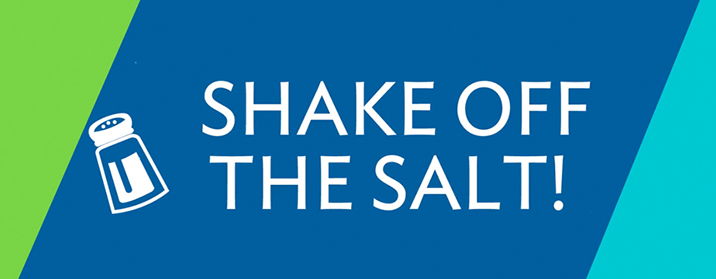16 High Sodium Foods
The recommended daily intake (RDI) for sodium in adults is 2,300 mg/day. For people with chronic kidney disease (CKD), a lower sodium intake of under 2,000 mg/day is recommended—though only your doctor can tell you what's right for you. On average, the daily sodium intake for Americans is about 3,400 mg/day, and you may be consuming much more than you even realize. To help protect your health, it's important to become aware of your salt intake and to focus on choosing low sodium foods, while limiting foods high in sodium.
The effects of too much sodium
Sodium intake can have a big impact on your health, especially if you're living with chronic kidney disease (CKD). Too much sodium contributes to fluid buildup, which can cause high blood pressure and stress on your body. People with kidney disease are already at risk for fluid buildup, known as hypervolemia, because their kidneys aren't working well enough to eliminate excess fluids as efficiently as healthy kidneys would. Eating too much salt can make fluid retention worse.
The good news is that there are several things you can do to help manage your salt and fluids. One big step is learning which high sodium foods to watch out for-and which low sodium foods to choose instead.

HOW TO LIMIT HIGH SODIUM FOODS
Get easy tips for choosing low- or no-sodium foods to help you stay your healthiest. See how to shake off the salt.
What foods are high in sodium?
-
CONDIMENTS
varies from 150–900 mg per serving
Ketchup and barbecue sauce can add over 150 mg per tablespoon. Soy sauce can add a whopping 900 mg of sodium per tablespoon.
-
TOMATO SAUCE
400 mg per ¼ cup serving
Tomato sauce can make an otherwise healthy dish high in sodium—it shows up in pastas, pizzas, soups and more.
-
SEASONINGS
varies, up to 690 mg per serving
Some seasoning blends incorporate salt where you might not expect it, like Cajun spices or ramen seasonings.
-
CANNED VEGETABLES
varies, up to 300 mg per ½ cup serving
Some canned vegetables are packed with salt. Be sure to choose “no added salt” options.
-
VEGETABLE JUICE
varies, up to 440 mg per ¼ cup serving
Drinking your vegetables can be very high in sodium. Look for low sodium options instead.
-
PICKLES
785 mg in a medium pickle
Pickles are made by preserving vegetables in brine, which is a salt solution—making them a very high-sodium food.
-
MOST BREAKFAST CEREALS
varies, around 220 mg or more per 1 cup serving
Even “healthy” options can have as much as 580 mg in a cup. Read food labels to find low sodium options.
-
PANCAKES
varies, 400–2,000 mg per serving
Making your own pancakes at home from scratch or a low sodium mix can help you control the salt.
-
COTTAGE CHEESE
800–1,000 mg or more per 1 cup serving
Cottage cheese is a low-calorie, high-protein food. It can also be high in sodium, so pick a low sodium option.
-
PROCESSED CHEESES
270 mg per 1 oz slice
A slice of American cheese has lots of sodium. Mozzarella or Monterey Jack are lower sodium options.
-
DELI MEATS, SAUSAGES AND HOT DOGS
500–1,000 mg per 2 oz serving
Processed meats can contain lots of salt, plus preservatives that also contain sodium. Look for “no salt added” or “lower sodium” options.
-
FROZEN SHRIMP
up to 800 mg per 3 oz serving
Buy fresh shrimp if you can or check labels to avoid frozen shrimp with added salt or sodium.
-
SOUP
varies, up to 800 mg per cup
Try low sodium varieties to make your own soup at home with low sodium broth.
-
PIZZA
varies, 500–800 mg or more per slice
Pizza combines several potentially high sodium foods—tomato sauce, cheese and sausage or pepperoni. Choose fresh veggie toppings instead.
-
SANDWICHES
varies, up to 2,325 mg or more
Cured meats and condiments add up to too much sodium. Opt for low sodium meats, cheeses and fresh veggies.
-
PREPACKAGED FROZEN DINNERS
varies, up to 1,300 mg per dinner
Be sure to read food labels and compare options, so you can make healthy choices.

READ THE LABEL
Suggested topics
The Importance of Removing Excess Fluid
Healthy kidneys pull extra fluid out of your body and send it away in your urine. If you have kidney failure at stage 5 chronic kidney...
Choosing Low Sodium Foods
Managing your sodium intake is an important part of looking after your health—especially if you’ve been diagnosed with chronic kidney...
Understanding Hypervolemia and Fluid Overload
Hypervolemia is a medical condition when you have too much fluid in your body, also described as having excess...
